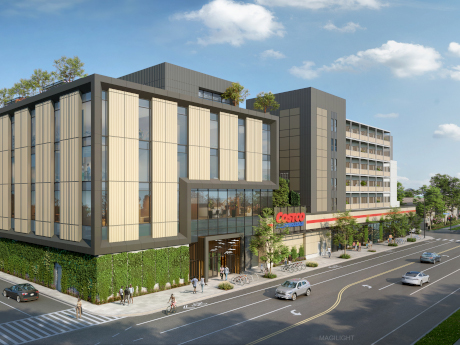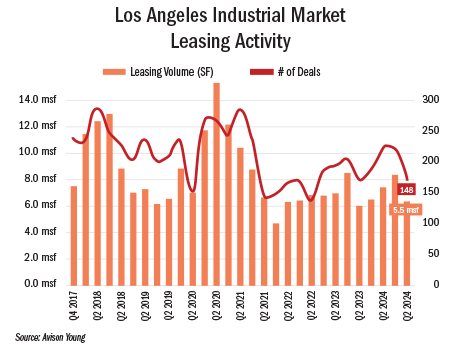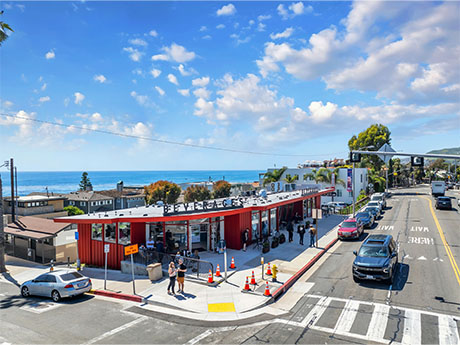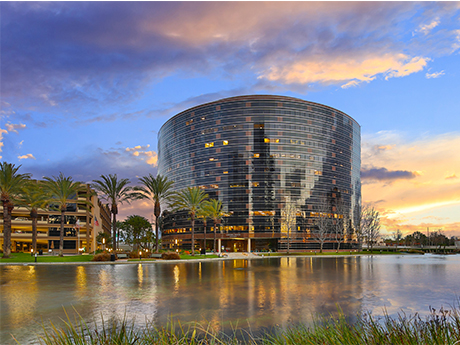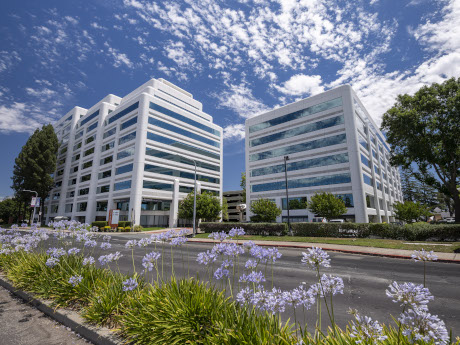— By Kalli Knight of Colliers — The Los Angeles multifamily market faces several headwinds, including rising expenses, the aftermath of recent fires, insurance exclusions and Measure ULA. These factors impact transaction volumes, leading many investors to remain on the sidelines. However, Southern California and Los Angeles will continue to have strong fundamentals, attracting a unique pool of buyers. This includes qualified, high-net-worth family offices eager to take advantage of limited competition to acquire new construction at prices below replacement costs or favorable debt terms. Management companies are increasingly critical in supporting property stabilization post-pandemic, with a growing urgency to enhance operations and increase net operating income. As construction loans mature, their impact on property stabilization is significant. Though the concession rate of 0.7 percent is significantly less than the national concession rate of 1.1 percent, many developers now offer four to six weeks of concessions to lease properties and meet projected rents outlined in their financial analyses. Some developers have also opted for creative strategies, such as providing customized closets to attract renters at higher luxury price points instead of relying solely on weekly concessions. Vacancy rates in the market vary, but have generally improved since 2024. They have …
Market Reports
— By Tony Solomon of Marcus & Millichap — The positive relationship between retailers and rooftops is proving true in key ways across Los Angeles County. The market’s retail vacancy has risen in recent years — with the metro-wide rate up 120 basis points since 2022 – but the overall measure of 6.5 percent belies strong local dynamics. Retailers are continuing to find opportunities, especially in zones with recent and upcoming residential growth. Multifamily vacancy dropped by 50 basis points or more last year in the Santa Clarita Valley, Southeast Los Angeles and the South San Gabriel Valley. These same submarkets recorded retail vacancy rates at or under 5.2 percent at the onset of this year, which are some of the lowest in the county. Property performance momentum is set to continue in those areas amid numerous upcoming move-ins, including from tenants like Savers and Planet Fitness. The growing local apartment sector is expected to help absorb the primary area of heightened availability: Downtown Los Angeles. Retail vacancy here jumped 220 basis points last year to 9.1 percent, more than 100 basis points above the next highest submarket. Thankfully, that vacancy pressure may begin to ease in the near future. …
— By Caleb Hodge of KWP Real Estate — The Los Angeles office market is undergoing a transformation. Finally. Downtown LA and most of the submarkets were decimated following the pandemic, but leasing activity is increasing. In fact, the fourth quarter of last year saw the highest annual leasing activity since the pandemic was officially declared “over,” according to Savills Research and Data Services. How is this possible? The answer lies in the evolving identity of office spaces, which is driven by the demand for creative office. Despite increased asking rates in certain submarkets, Los Angeles is still a tenant-driven office market. The rub is that hybrid-working models continue to, at times, complicate leasing decisions. Fortunately, highly sought-out creative office space in Los Angeles offers two key incentives: premium amenities and functional, innovative office designs. Creative office space may still be considered niche, but the amenities and design layouts are critical when bringing employees back to the office. In fact, those attributes are highly desired by most modern office workers, whether their industry or physical space is considered “creative” or not. With traffic being a constant factor in LA, centrally located offices with easy commutes for a majority of workers …
— By Patrick Barnes of Avison Young — The Los Angeles industrial property market has experienced increasing space availability and shifting tenant priorities over the past several quarters. Due to concerns about potential labor strikes at East and Gulf Coast ports, the anticipated surge in short-term sublease demand failed to materialize in the fourth quarter of 2024. Additionally, with a labor contract agreement reached in January, any lingering expectations that rerouted shipments would continue to bolster West Coast activity have largely dissipated. Despite a 21.7 percent year-over-year increase in TEU (twenty-foot equivalent unit) volume from 2023 to 2024, sublease availability has risen significantly as TEU tenants have either warehouse capacity or shipments leaving the region by rail. Companies today are reassessing their space needs, focusing on cost savings and operational optimization rather than expansion to deal with inflation and tariffs. Sublease space increased by 12.8 percent quarter over quarter, reaching 11.2 million square feet and pushing the overall availability rate to 9.3 percent. These changes have also led to a drop in industrial rental rates. After peaking at $1.97 per square foot in 2023, average rents have fallen 26.4 percent to $1.45 per square foot in fourth-quarter 2024. However, Class …
— By Shane Shafer of Northmarq — The Orange County apartment market is one of the most dynamic and sought-after real estate sectors in Southern California. Known for its beautiful beaches, high quality of life, and proximity to major job centers like Los Angeles and San Diego, Orange County has become a prime location for renters. As of 2025, the apartment market in the area is marked by a blend of high demand, rising rents, and an evolving landscape shaped by both economic and demographic trends. The demand for apartments in Orange County has been consistently strong in recent years. This is driven by both local and regional factors. The county’s thriving economy — bolstered by sectors like technology, healthcare, tourism and finance — provides ample job opportunities, making it an attractive place for workers from across the state and beyond. This influx of talent, combined with a relatively low housing supply, has kept rental demand high, particularly in areas near major employment hubs, such as Irvine, Costa Mesa and Anaheim. The region’s high desirability keeps apartment vacancies generally low, with occupancy rates often nearing or surpassing 95 percent. New construction, while robust, has not fully kept pace with the …
— By John Read of CBRE Retail Investment Properties-West — The expression “in the black” signifies financial health, a positive outlook, investment opportunities and growth. It’s a phrase that’s resonating strongly with investors, as Orange County’s thriving retail fundamentals spur robust demand for investment properties. Despite ongoing capital market volatility and fluctuating interest rates, Orange County remains a prime target for retail property investors. The county’s strong retail property fundamentals is driven by its diverse, affluent and highly educated population. The average household income in Orange County exceeds $157,000, with more than 46 percent of residents holding a bachelor’s degree or higher. It also boasts a low unemployment rate of 3.8 percent. Retail property fundamentals concluded the fourth quarter of 2024 with a county-wide availability rate of 3.8 percent, down from the previous quarter. This reduction was fueled by sustained demand, limited inventory, minimal future supply, 547,000 square feet of positive net absorption and an average asking rent of $2.57 per square foot, a $0.13 increase from the prior year. These positive trends, combined with limited new retail property construction (only 190,000 square feet of supply, representing 0.1 percent of existing inventory and the lowest share among the nation’s 40 …
Orange County Boasts Best Industrial Rental Rates in South California, Despite Rising Vacancy
by John Nelson
— By Nick Krakower and James deRegt of SRS Real Estate Partners — The fourth quarter of 2024 revealed significant trends across key indicators in Orange County’s industrial market. For starters, the county’s industrial market vacancy rate was 3.9 percent at that time. This figure represents a continued trend of gradually increasing vacancies, which has consistently occurred over the past eight quarters. The uptick in vacancies can be attributed to increased availability in larger distribution centers and evolving tenant requirements. North County had the largest increase at 4.5 percent. While a 3.9 percent vacancy shows OC’s industrial market remains relatively tight, there is a countywide availability of more than 16 million square feet. Net absorption for the quarter came in at -900,000 square feet. Sectors that rely heavily on logistics and distribution were most impacted, as the move to less expensive space in the Inland Empire continues. Despite the negative figure, leasing activity remains high with quarterly averages of more than 2 million square feet. Net absorption is expected to stabilize with the development pipeline slowing down. Development activity remained strong with 2 million square feet of new industrial space in the pipeline. This new inventory focuses on state-of-the-art facilities designed to …
— By Sebastian Bernt and Erick Parulan of Avison Young — The Orange County office market continues to show resilience, particularly compared to urban centers like Downtown Los Angeles. Its suburban environment, coupled with higher office utilization rates, has made it an attractive option for businesses adapting to evolving workplace strategies. As a result, leasing activity has remained steady with availability stabilizing and tenant demand holding firm. Total leasing volume reached 1.6 million square feet in the fourth quarter of 2024, bringing the annual total to 7.8 million square feet. Notable transactions included Willow Laboratories, which signed a 63,440-square-foot lease at 121 Theory Drive in Irvine, and Acrisure, which secured 59,409 square feet at 611 Anton Blvd in Costa Mesa. While leasing slowed slightly in the fourth quarter, demand for modern, amenity-rich office spaces remained strong as companies continued implementing return-to-office strategies. This demand has pushed average asking lease rates to $35.05 per square foot, reflecting a broader shift toward high-quality, collaborative work environments that prioritize employee engagement and workplace experience. Orange County’s growing residential appeal has further fueled office demand as young professionals and families increasingly opt for a suburban lifestyle. As a result, companies are prioritizing locations with …
A notable shift in the way we live, work and play has occurred since the pandemic — one that emphasizes efficiency, multi-functionality and convenience. The result has been an increase in the demand and popularity of mixed-use developments. Developers love them for their efficiency. Investors love them for their diversity. And consumers love them for their ability to achieve said live-work-play trifecta all under one roof. Within Orange County, South Coast Metro stands out as an area that fosters this type of urban development, blending retail, multifamily, office and cultural assets in a way that fosters economic growth and community engagement. Adjacent to John Wayne Airport, this 2,500-acre district shows how strategic development can create a self-sustaining urban environment. A Retail Powerhouse with Expanding Opportunities South Coast Metro is arguably most known for being the home of South Coast Plaza. The West Coast’s largest luxury shopping destination saw record annual sales exceeding $2.3 billion in 2023. While luxury retail remains a major draw, the broader South Coast Metro caters to a diverse range of shopping experiences, which includes the boutique-driven OC Mix and SoBECA District, as well as major national retailers. This variety underscores a key trend in commercial real estate: …
— By Colin Yasukochi, executive director, Tech Insights Center, CBRE — An increasing supply of distressed properties for sale has been met with enthusiasm by a growing number of opportunistic buyers in San Francisco. Prices up to 70 percent lower than the seller’s cost basis, combined with improving fundamentals, has given investors confidence to make property purchases ahead of substantial leasing market recovery. About $1 billion of office sales volume could be reached by year-end 2024. There are 27 properties totaling 3.6 million square feet that have sold (totaling $338 million), are under contract (totaling $193 million) or being marketed ($453 million). If this occurs, it would be the highest number of properties sold since 2019 and the highest square footage and dollar volume since 2021. The years 2022 and 2023 combined had a total sales volume of $945 million. Stabilization in the office leasing market has emerged with vacancy and rents little changed and much higher space demand. Second-quarter 2024 vacancy ticked up to 36.8 percent (+0.1 percent), while average asking rents ticked down to $68.43 (-$0.12) compared to the previous quarter. Demand indicators strengthened with leasing activity and tenants in the market rising in the second quarter of …
Newer Posts


